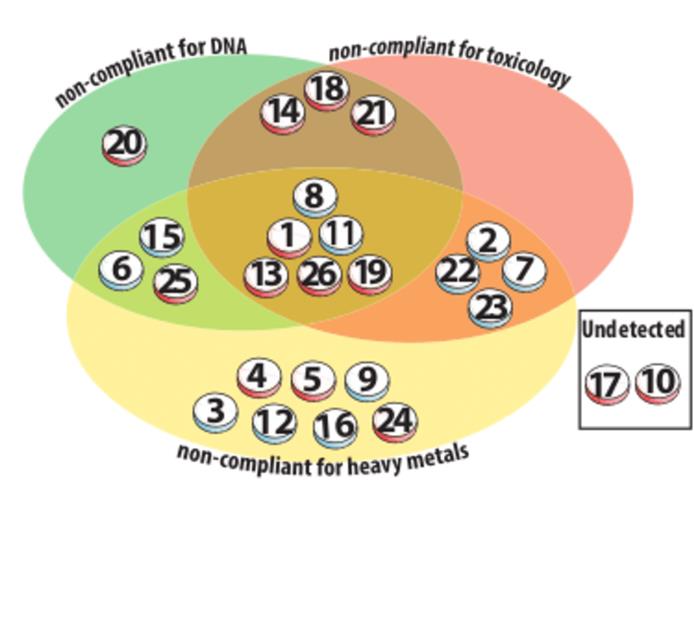"Many people take herbal medicines, including traditional Chinese medicine (TCM) thinking they are doing something positive for their health. Ironically, in many cases they may be doing just the opposite.
Have you ever wondered what is actually in the herbal medicine products you buy? Has the herb on the label been replaced with another herb? Have pharmaceuticals been snuck in?
Making sure that a tablet claiming to have 500 milligrams of paracetamol really does contain 500 milligrams of paracetamol is relatively easy, there are established assays to measure paracetamol routinely. But how do you test for herbs?
Most herbal medicines are pills or powders that have removed all trace of structure we would normally use to identify plants, and many plants have no chemical signature that is able to definitively identify them. And what about all the other possible contaminants and adulterants that could hide in the complex brew of chemicals from herbal medicines?
Our research, which has just been published in the journal Nature Scientific Reports, goes a long way to answering that.
For the first time, our group of researchers from Curtin University, Murdoch University and the University of Adelaide have combined some of the most cutting-edge and sensitive analytical techniques to screen a set of traditional Chinese medicines available in Australia.
We used a three-pronged approach, combining DNA sequencing, toxicology and heavy metal testing to elucidate the true composition of 26 TCMs purchased at random from the Adelaide Markets; most were either for colds and flu’s or for general wellness.
What did we find?
Nearly nine in ten of these medicines had some form of undeclared substance in them as either adulteration or contamination. Sixteen of TCM’s had more than one contaminant or adulterant.
While around half of these medicines were not listed with the Therapeutic Goods Administration (TGA), and should not have been available for purchase, contaminants were found in both TGA-listed and non-listed medicines. These adulterants/contaminants included pharmaceuticals and toxic heavy metals."
See the above image for a Venn Diagram "Summary of the contaminants in traditional Chinese medicines (TCMs) tested in this study that contained toxic metals, undeclared or illegal contents as determined by DNA, toxicological, and heavy metal screening methods. Each TCM tested is represented in the diagram as a tablet; blue shading on tablets indicate AUST L listed medicines, red shading are not-listed with the TGA regulatory body. TCMs deemed non-compliant for DNA (green), toxicology (pink) and heavy metals (yellow) or a combination thereof, are represented within the Venn diagram. Coglan et al.,Sci Reports 2015"
The Conversation Article by Ian Musgrave and Michael Bunce:
theconversation.com/whats-i...
Full research article published in the journal of Nature Scientific Reports:
"What this means is that you should be very careful about choosing and purchasing TCMs. Definitely avoid any medicine that does not have an ARTG listing (it should have a number like AUST L 123456 on the front of the bottle). But even medicines with these AUST L labels are no guarantee of safety.
This also highlights the importance of informing your health practitioner if you are taking TCMs as adulterants might interact with conventional medication to cause adverse effects."
Neil
